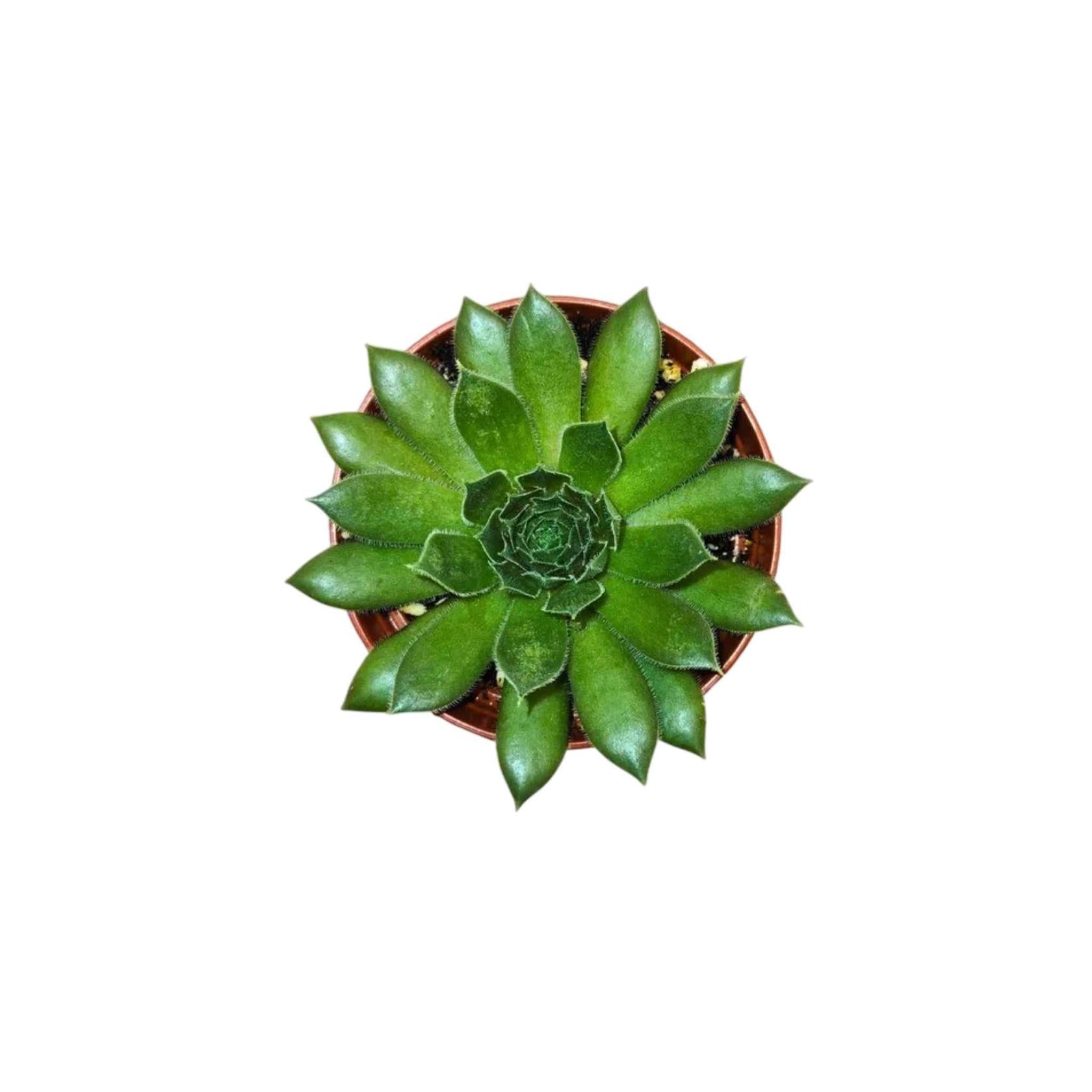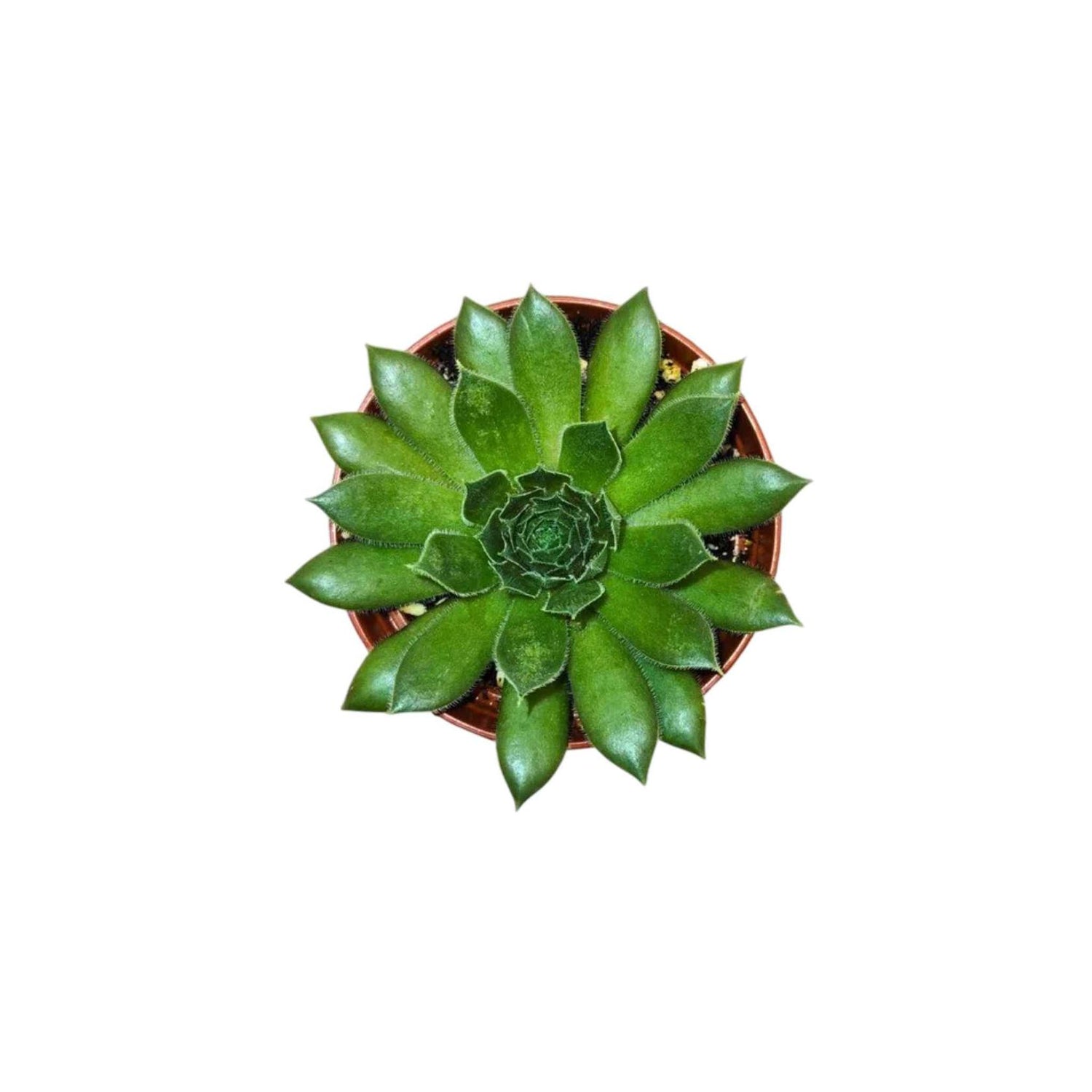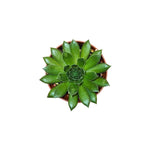
Sempervivum Kalinda Succulent
$12.79
Unit price perEstimated delivery between 12 October and 14 October.
At Divine Root, we are committed to delivering healthy, high-quality indoor plants to our customers. While we do not accept returns due to the perishable nature of live plants, we offer a 30-day plant health guarantee and store credit for qualifying issues. Please read our Refund Policy carefully to understand how we handle concerns regarding plant health, shipping, and order

Sempervivum Kalinda Care Guide & Presentation
Pet Safe
Yes
Water Needs
Low
Sunlight
Full sun
Hardiness Zones
4-9
Temperature
60°F to 80°F
Suitable Space
Rock Gardens, Containers, or Dry Landscapes
Humidity
Low
Plant Class
Sempervivum
Plant Type
Perennial
Plant Characteristics
Rosette-forming
Genus
Sempervivum
Fertilizing
Rarely
Re-potting
1-2 Years
Cleaning
As needed
Propagation
Offsets
Sempervivum Kalinda Succulent: Overview
Sempervivum Kalinda, commonly known as Houseleek Hens and Chicks, is a hardy perennial succulent prized for its striking rosettes and resilience. Part of the Crassulaceae family, this variety features tight, symmetrical rosettes with pointed leaves that transition from green at the base to deep burgundy or purple tips, especially under bright sunlight. Native to mountainous regions of Europe, it thrives in rocky, well-draining soils and spreads by producing offsets (“chicks”) around the mother plant (“hen”).
Mature rosettes reach 3-4 inches in diameter and may produce tall, star-shaped pink or red flowers in summer, after which the mother plant dies, leaving offsets to continue growing. Ideal for rock gardens, containers, or green roofs, this drought- and cold-tolerant succulent adds year-round visual interest to gardens.
Sempervivum Kalinda: Benefits
- Cold-hardy: Survives freezing temperatures and snow, making it suitable for alpine climates.
- Drought-tolerant: Thrives in dry, poor soils with minimal watering.
- Low maintenance: Requires no fertilizing or pruning.
- Ornamental appeal: Color-changing foliage adds contrast to gardens or arrangements.
- Natural propagation: Spreads easily via offsets, filling spaces over time.
Sempervivum Kalinda Care Guide
Light and Water
- Light: Prefers full sun (6+ hours daily) for vibrant coloration. Tolerates partial shade but may lose burgundy tips.
- Water: Water sparingly only when the soil is completely dry (every 2-3 weeks in summer). Avoid winter watering to prevent rot.
Soil and Fertilizing
- Soil: Use gritty, well-draining soil (e.g., cactus/succulent mix with perlite or coarse sand).
- Fertilizer: No fertilizer needed. Excess nutrients harm growth.
Temperature and Humidity
- Temperature: Hardy in USDA zones 3-8. Tolerates temperatures from -30°F (-34°C) to 90°F (32°C).
- Humidity: Thrives in dry air; avoid humid conditions to prevent rot.
Pruning, Propagating, and Repotting
- Pruning: Remove dead leaves or spent flower stalks. Separate offsets to control spread.
- Propagating: Gently twist offsets from the mother plant and replant in dry soil.
- Repotting: Rarely needed. Refresh the soil every 3-4 years if grown in containers.
Common Problems
- Root rot: Caused by overwatering or poor drainage. Ensure the soil dries fully between waterings.
- Aphids: Spray with water or treat with neem oil.
- Etiolation: Stretched rosettes due to low light. Move to a sunnier spot.
- Crown rot: Avoid water pooling in rosettes; water at the soil level.
Sempervivum Kalinda: Best Locations & Uses
- Rock gardens: Contrast with low-growing sedums or thyme.
- Container gardens: Add texture to mixed succulent displays.
- Green roofs or walls: Thrives in shallow, well-draining substrates.
- Gravel beds or pathways: Tolerates poor soil and foot traffic.
- Pet-safe gardens: Non-toxic to cats, dogs, and humans.


